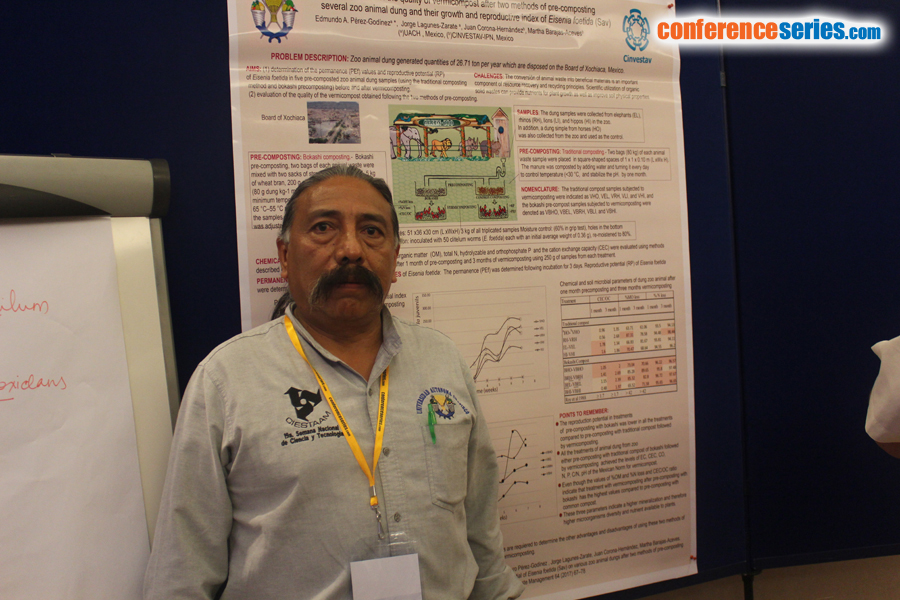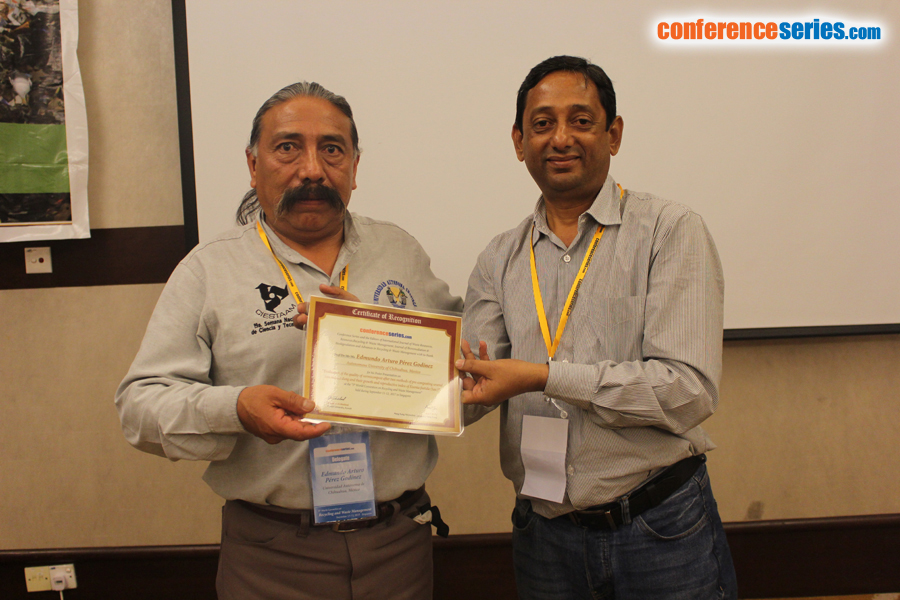
Edmundo Arturo Pérez GodÃnez
Autonomous University of Chihuahua, Mexico
Title: Evaluation of the quality of vermicompost after two methods of pre-composting several zoo animal dung and their growth and reproductive index of Eisenia foetida (Sav.)
Biography
Biography: Edmundo Arturo Pérez GodÃnez
Abstract
The increasing amount of zoo animal dung generated quantities of 26.71 ton per year which are disposed on the Board of Xochiaca, Mexico. Their management of waste disposal such as land filling, open dumping or open burning are unsustainable owing to loading and production of certain toxic substances and gases from the wastes, which may have potential adverse effects on the environment, health and biodiversity. In this study, samples of four zoo animals’ dungs (elephants, rhinoceros, hippopotamus and lion) and one horse dung was pre-composted in two ways: (1) Traditional composting and (2) Bokashi pre-composting for 1 month, followed by vermicomposting for 3 months. The permanence (PEf) and reproductive potential (RP) of Eisenia foetida as well as the quality of vermicomposting were evaluated. The PEf values and RP index of E. foetida were higher for samples pre-composted using the traditional composting method (98.7-88% and 31.85-16.27%, respectively) followed by vermicomposting (92.7-72.7% and 22.96-13.51%, respectively), when compared with those for bokashi pre-composted samples followed by vermicomposting, except for the horse dung sample (100% for both the parameters). The values of electrical conductivity (EC), cation exchange capacity (CEC), organic C, total N, available P, C/N ratio and pH showed that both treatments achieved the norms of vermicompost. However, vermicomposting after bokashi pre-composting produced the highest values of %OM loss, %N loss and CEC/OC ratio, when compared with those achieved by vermicomposting after pre-composting using the traditional composting method. The two methods applied in the present study appear to be a good alternative to treat zoo animal dung waste and convert it into valuable nutritional material for plants. In the future, further experiments with plants should be conducted to determine the other advantages and disadvantages of using these two methods of pre-composting prior to vermicomposting.
Speaker Presentations
Speaker PPTs Click Here



